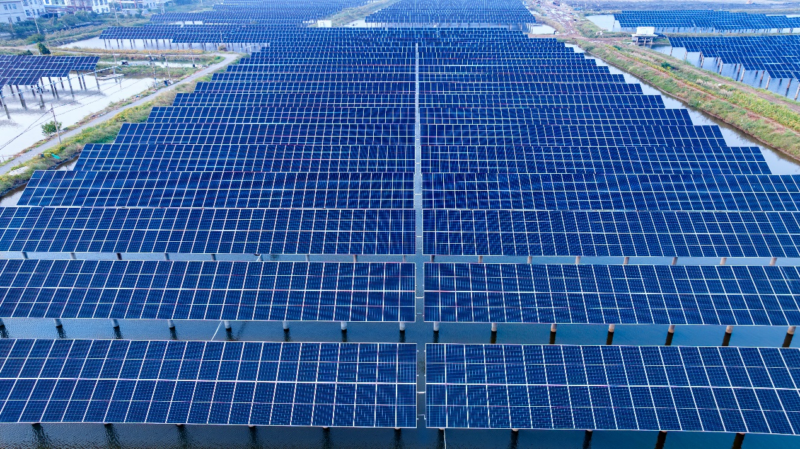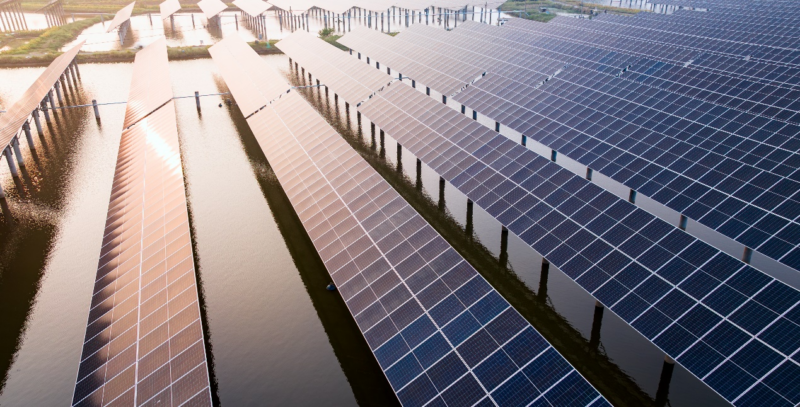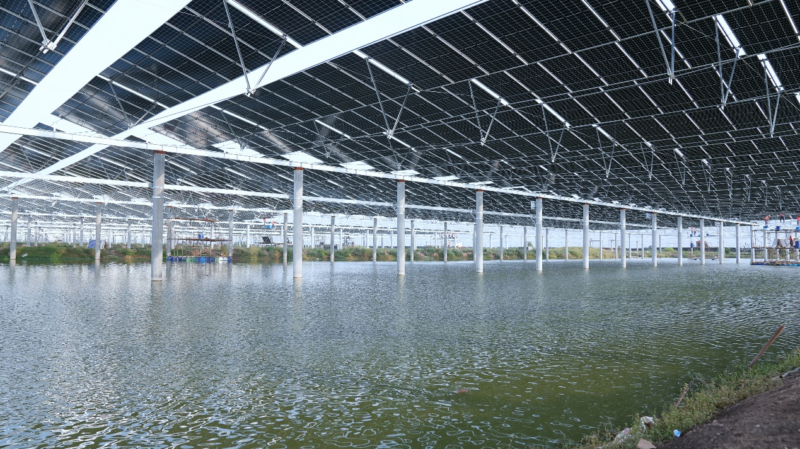PVTIME – On November 19th, the first batch of capacity from China’s largest single fishery-PV complementary project with a capacity of 940MW was successfully connected to the grid for power generation. The project, invested and constructed by DMEGC’s subsidiaries, broke ground in February this year.

“Fishery-PV complementarity” signifies the harmonious coexistence of photovoltaic power generation and fish farming, significantly enhancing the economic value per unit of land while achieving efficient utilization and ecological development of land resources. This sets a new example for the development of clean energy.

All the Infinity series N-type modules used in this project are produced by DMEGC Lianyungang factory, with a total quantity exceeding 1.9 million pieces. The Infinity series modules have ranked at the top among N-type modules for several consecutive months in the TaiyangNews global module efficiency rankings, and have recently received a Bankability Certification from TÜV Rheinland which highlights their technological innovation and product quality. Additionally, DMEGC’s Lianyungang factory is a true “carbon-neutral factory,” achieving 100% green energy production and receiving the first ISO 14068 carbon neutrality certificate in the photovoltaic industry issued by TÜV SÜD.

Another significant highlight from the project site is the five-string flexible support, which features high strength, rational force distribution, excellent stability, and high adaptability to the site, enabling large spans and high clearance. Compared with traditional fixed supports, flexible supports have advantages such as fewer pile foundations, larger spans, and less environmental impact, significantly reducing the impact on fish farming and improving space utilization. Meanwhile, a series of wind-induced vibration suppression technologies ensured the system’s stability and safety.
Additionally, the project also includes the construction of two 220 kV booster stations and production office buildings among other supporting facilities, providing a solid guarantee for the stable operation of the power station.
A preliminary forecast is that after the project is fully completed, its annual average power generation will reach 1.609 billion kilowatt-hours, saving 496,400 tons of coal and reducing carbon dioxide emissions by 1.2374 million tons per year, sulfur dioxide emissions by 200.55 tons per year, and nitrogen oxide emissions by 286.51 tons every year. This has a positive and far-reaching impact on improving environmental quality and reducing greenhouse gas emissions.











